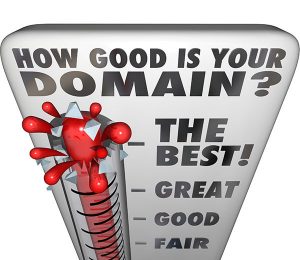4 min read
5 things every ecommerce website for printers must have
We’ve established in a few of our previous posts that having a website with ecommerce capabilities is an important part...
By: Alen Rokolj on Oct 5, 2016 3:54:00 PM

In our last article on the subject of Local SEO, we took a look at why Link-building is widely considered an efficient way for your print service website to rank above local competition in search engine algorithms like Google.
This quick post covers how and why you should measure and track the credibility of your website using a tool called Domain Authority.
Domain Authority (DA) is a Moz tool that can calculate how a web page ranks in Google. It estimates the quality and competitiveness of the domain content based on a number between 1 and 100. Your Domain Authority number represents your rank relative to the rank of other websites indexed by Google’s vast search engine, which gets 72.48% of the world’s search engine market share.
With web-to-print technology, the Print Service Industry has fastened itself to the dynamics of Internet marketing and Search Engine Optimization (SEO). A high Domain Authority relates to high search engine scores, and this correlates with higher traffic. Having more traffic on your eCommerce website equals more potential print buyers. That’s why making an effort to raise your DA is a smart move for any print business looking to become web based.
A great Moz tool that checks your Domain Authority for free is Open Site Explorer.
Let’s say you’ve got a DA above 50 (awesome rating), compared to the lower strata of 10 to 20. When in the higher range, it becomes tougher to improve your rank because the quality of your site content is already judged to be so high.
As Web to print becomes widespread, you may be seeking extra ways to kick-start your DA up above your local print shop competitors. If that’s the case, then you may have stumbled onto something called Link Juice.
It is a slang concept in SEO that recognizes the link quality of a website. Link Juice tries to roughly calculate the potential ranking power of any link. This determines how much value a page is able to pass onto any external or internal pages it is linked with.
This value, is based on the rank that the page or domain is given in Google’s search index, which as discussed, is also measured by Moz and rightfully termed Domain Authority.
 For example, an outbound hyperlink to the homepage of Intuit’s accounting software package (like this: QuickBooks) would have more Domain Authority than an inbound hyperlink to the recently published PressCentric article on real-time Quickbooks Integration. Linking out to a homepage like QuickBooks, would give back more juice than a freshly published article, because it takes many years of success and steady traffic to rally up a strong DA.
For example, an outbound hyperlink to the homepage of Intuit’s accounting software package (like this: QuickBooks) would have more Domain Authority than an inbound hyperlink to the recently published PressCentric article on real-time Quickbooks Integration. Linking out to a homepage like QuickBooks, would give back more juice than a freshly published article, because it takes many years of success and steady traffic to rally up a strong DA.
When you link out to respected domains with a high DA as a part of your SEO campaign, you’ll have a better chance to improve your SERP visibility and get more print buyers clicking to purchase.
Much of the website’s quality is determined by algorithms that sweep the world wide web, indexing data and trying to rank each web page. PageRank was the original ranking algorithm developed by Google, however it has recently retired. These algorithms are the judge, jury, and executioner, constantly shape-shifting focus and being refined. The exact logic behind how they work is well beyond one single person. But thanks to metric tools like Domain Authority, average business owners can predict how competitive their website’s are performing on search engines for certain niche-specific keywords.
Nov 9, 2021by Christopher Howie
We’ve established in a few of our previous posts that having a website with ecommerce capabilities is an important part...
Nov 5, 2021by Christopher Howie
One of the most underrated and underutilized strengths of web to print technology is its benefits as a sales tool. We...
Nov 2, 2021by Christopher Howie
Welcome to the first article in our Online Designer Feature of the Month series! Each month we will be highlighting a...